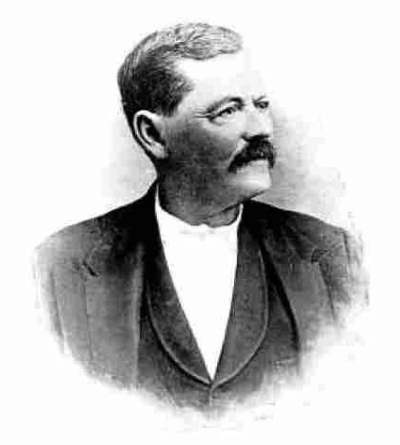Milam County Historical Commission
Milam County, Texas
Milam County, Texas






From a Farm to a Place in History
by Jeanne Williams - Temple Daily Telegram
February 14, 2011
SAN GABRIEL — The life of Milam County farmer James H. Holtzcla embraced many of the
history making stages of Texas, according to “The 1893 History of Texas, together with
a Biographical History of Milam, Williamson, Bastrop, Travis, Lee and Burleson
Counties.”
As a Texan in the early 1800s, Holtzclaw served under several governments, saw three
wars of national consequences, “as well as numerous Indian forays and expeditions, the
expulsion of the red man, the era of railway development, urban development, internal
improvement and all the wonders wrought by steam and electricity, brains, energy and
money.”
Holtzclaw, a respected Milam County farmer, served in local offices and was a volunteer
in the Confederate Army from 1862 to the end of the war serving with Co. B, 35th
(Brown’s) Regiment, Texas Cavalry. Adventures and exploits aside, Holtzclaw is best
remembered in Texas history for his furtiveness and daring as the ex-Confederate
soldier who boldly snatched ornaments off a regimental flag planted in plain sight of a
Union Army camp on the San Gabriel River in Milam County.
After the surrender of the Trans-Mississippi Department in May 1865, Union forces
entered Texas as part of the army of occupation. One regiment, the 18th New York
Cavalry, passed through Milam County in late July on its way to San Antonio. The
regiment halted for refreshments at the San Gabriel River on July 23. On that day, a
number of former Confederate soldiers from Milam County were paroled by Capt. Fenton
Rockwell, one of the regiment’s officers. This temporary military encampment along the
San Gabriel River was near Holtzclaw’s farm.
Holtzclaw, happening to pass that way at the time, “noticed their colors, a splendid
flag said to have been presented to them by the ladies of the town in New York where
the regiment was raised” standing in the bed of the river at some distance,
unprotected, but in full view of the camp.
“Slipping down unseen to where the flag stood, he hurriedly took off the large silver
spear head and cord, and made away with them, leaving the staff and flag,” accounts
stated.
As soon as the loss was discovered, there was consternation in the camp. An immediate
search was instituted. Several residents were detained and threatened with severe
punishment. Among those arrested was a tenant of Holtzclaw’s farm, Alexander Phillips,
who was treated by Union soldiers with “considerable indignity.”
Learning that his neighbors were suffering unjustly and that the search was liable to
develop into a sort of persecution, Holtzclaw decided to make “a clean breast of it”
and face the consequences.
Holtzclaw visited the camp requesting to see the commanding officer. The colonel asked
what Holtzclaw “meant by such conduct, and in the same breath desired to know if he was
fully aware of the nature of the offense he had committed.” Holtzclaw said after four
years in the Confederate Army he knew the rules of war.
“Looking the officer steadily in the eye, he said, ‘Colonel, when a flag is left
unprotected, isn’t it the property of the enemy, provided the enemy can get it?’”
The officer winced a little, but replied that it was not supposed there was an enemy in
the vicinity. Holtzclaw answered if there was not there would not be much need for
soldiers to be around. The officer then asked him what he intended to do with the
things he had taken. Holtzclaw said his intention was to make the finest bridle in
Texas out of the rope and decorate it becomingly with the silver spearhead.
Holtzclaw was released without penalty, and handed over the spearhead and cord to a
soldier who was sent after them, and no more was heard of the matter. Curiously, Union
Army records do not mention the incident, but Holtzclaw was considered a hero in his
neighborhood.
According to accounts, Holtzclaw was born at Andrew Jackson’s Nashville, Tenn., estate
The Hermitage on March 20, 1833, where his father, Warner Bernard Holtzclaw, worked as
an overseer. The family moved to Washington, Texas, in 1836 to become hotel keepers.
At age 14, after James Holtzclaw’s parents died, he was bound to William Rutledge of
Washington County to learn the blacksmith trade, but he ran away to search for gold.
The unsuccessful treasure hunt dissolved in 1852, with Holtzclaw stopping in El Paso
before moving to Washington County and relocating to Milam County in 1855. He married
Elizabeth T. Sanford in 1857, and settled on land between the San Gabriel and Little
rivers. Holtzclaw’s farm eventually spread over 2,300 acres. The couple had three
children, John E. Holtzclaw, Martha R. Holtzclaw Davis and James Holtzclaw.
Though he was born on an estate that became a national landmark, James Holtzclaw is
buried in an isolated, weed-choked and damaged family graveyard off FM 487 in Milam
County.
The Holtzclaw Cemetery — with 20 identified burial sites, including Holtzclaw’s wife,
Elizabeth; their son James, and daughter-in-law Melia Lizzie — is the only relic from
the vast family holdings that originated with a land grant, reported Norrine Holder
Holman, who wrote the book “170 Years of Cemetery Records in Milam County.”
jwilliams@tdtnews.com
All articles from the Temple Daily Telegram are published with the permission of the
Temple Daily Telegram.
All credit for this article goes to
Jeanne Williams and the Temple Daily Telegram
Temple Daily Telegram.
All credit for this article goes to
Jeanne Williams and the Temple Daily Telegram
Courtesy of James H. Holtzclaw
.
.

James H. Holtzclaw's Civil War escapade won him notoriety in Texas History